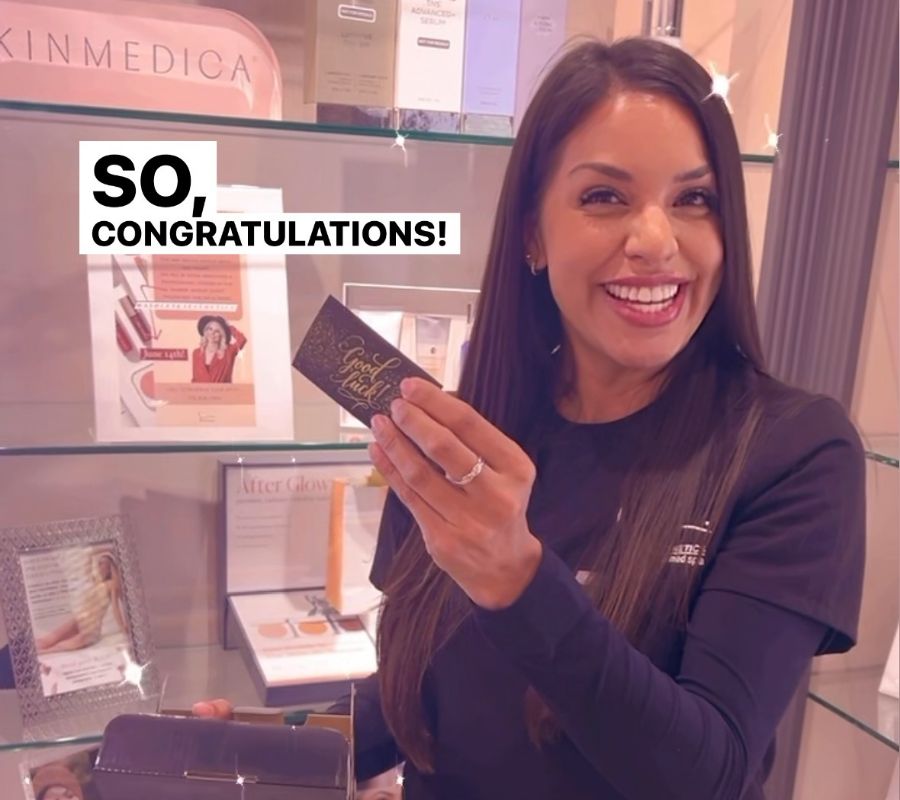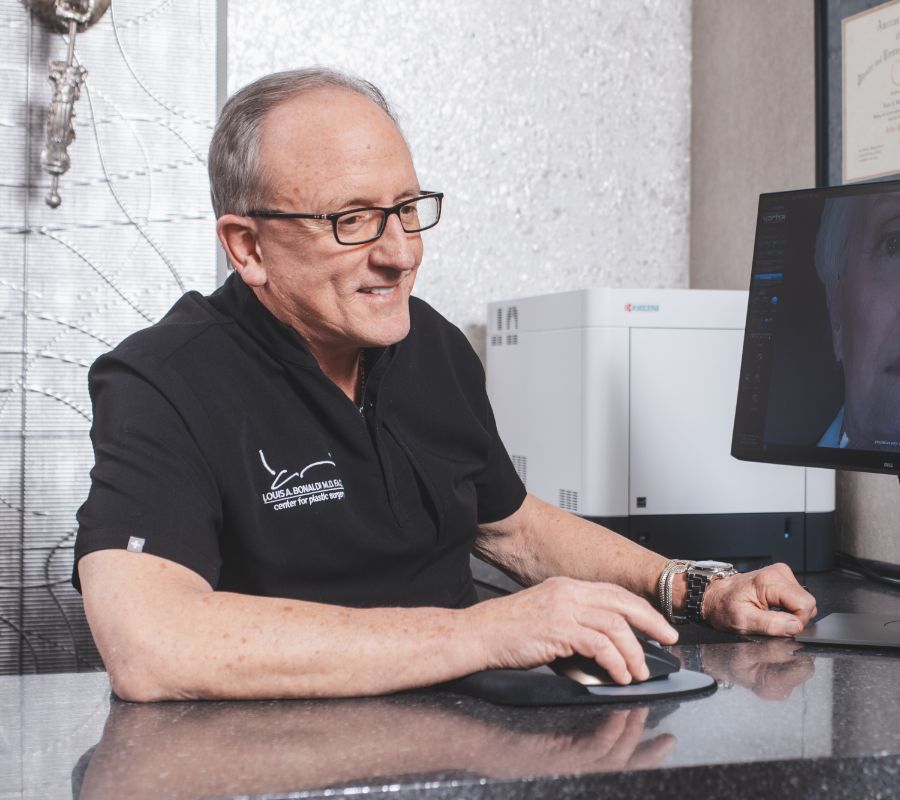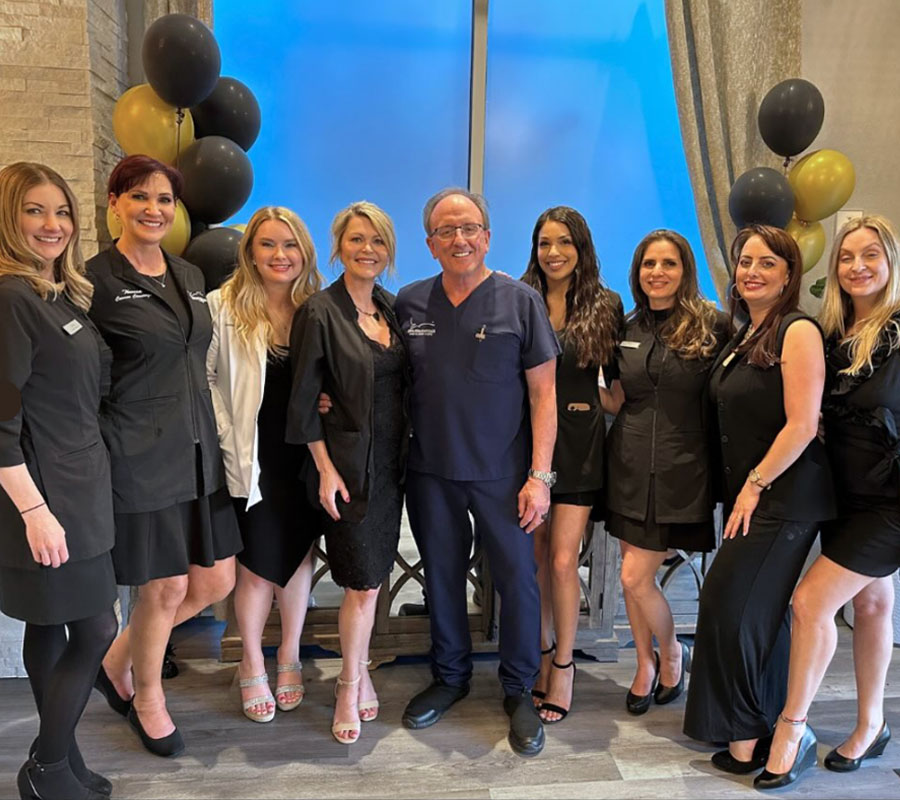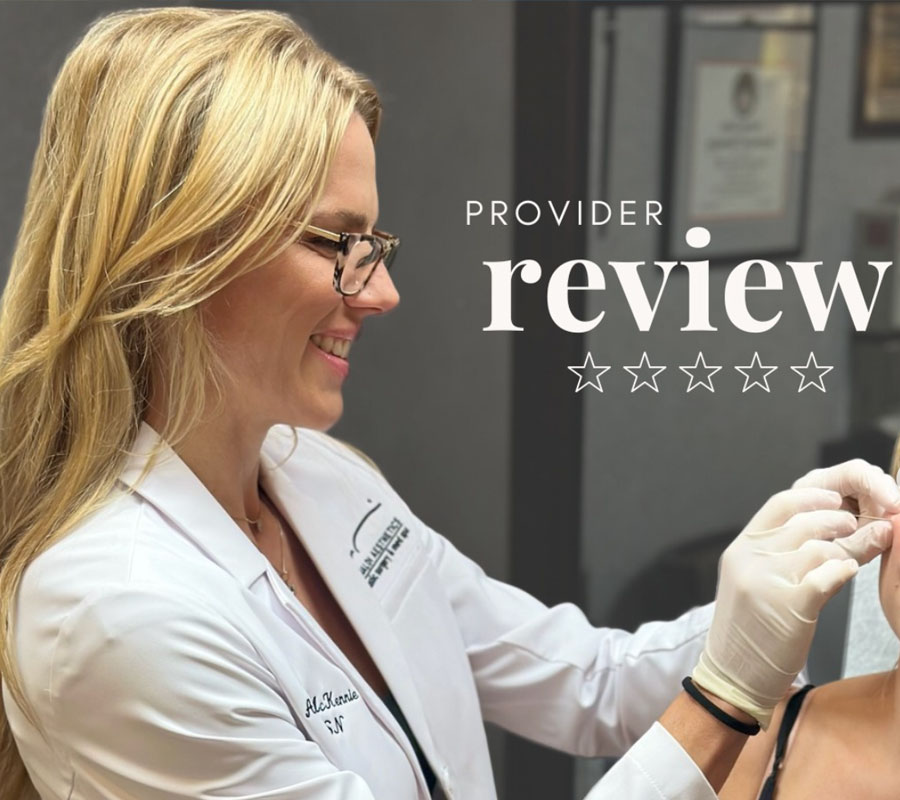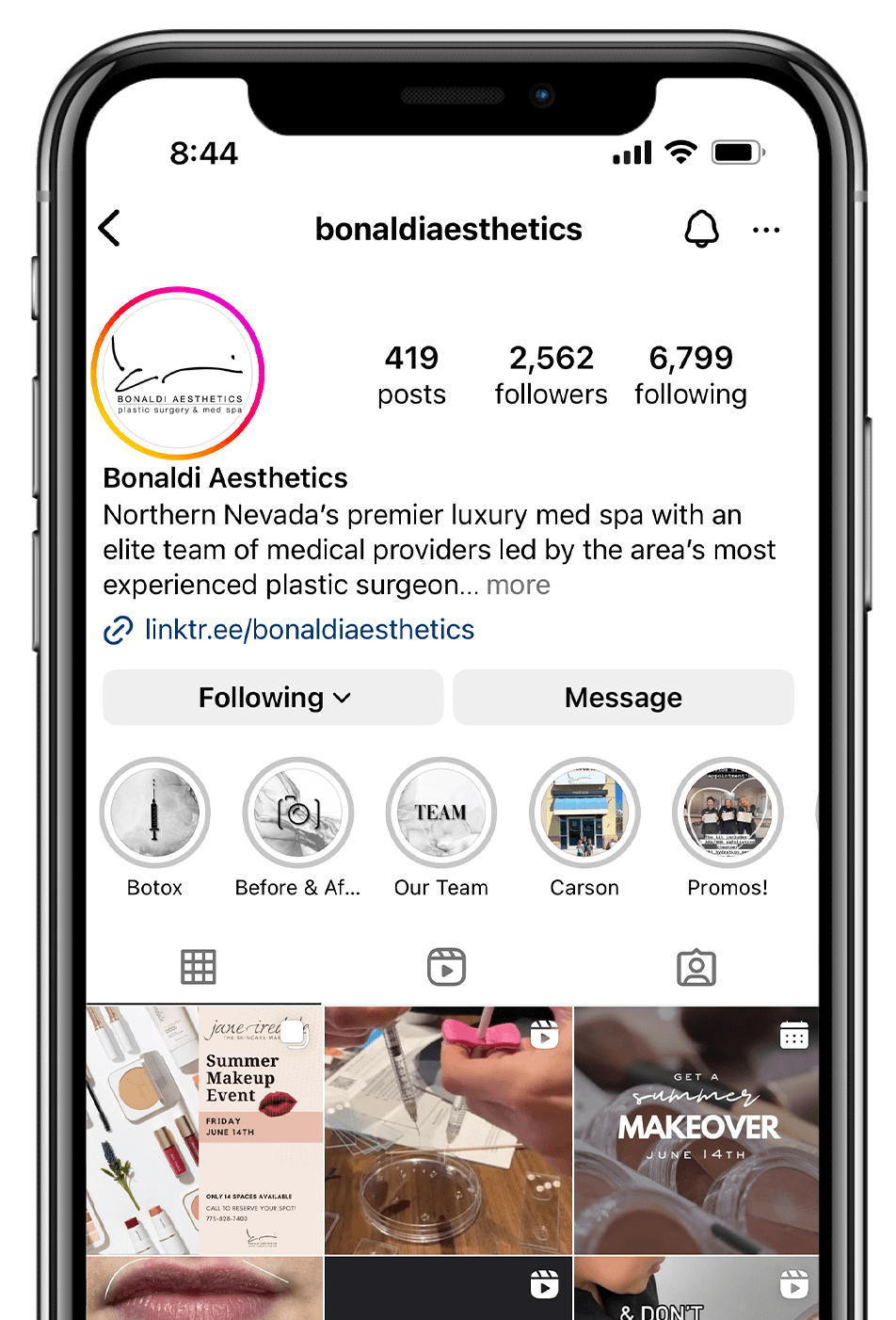September 05, 2019 | Oxygen Facial
5 minute read
The buzz surrounding oxygen facials may sound a little too good to be true. After all, if oxygen is the key to healthy skin, and your face is in contact with oxygen 24/7, then why isn’t your skin already naturally radiant?
But the key isn’t just exposure. An oxygen facial does more than just put your skin into contact with oxygen; it uses an infuser to force pure oxygen and the Rejuvenate Professional Serum into your skin to combat fine lines, wrinkles, dehydrated tissue, and signs of aging.
While many facial treatments can focus only on one or two areas of the face, an oxygen facial is a versatile treatment that can be administered to nearly every part of the face to combat specific problematic areas. Here are 7 areas that Dr. Bonaldi’s office can treat through an oxygen facial.
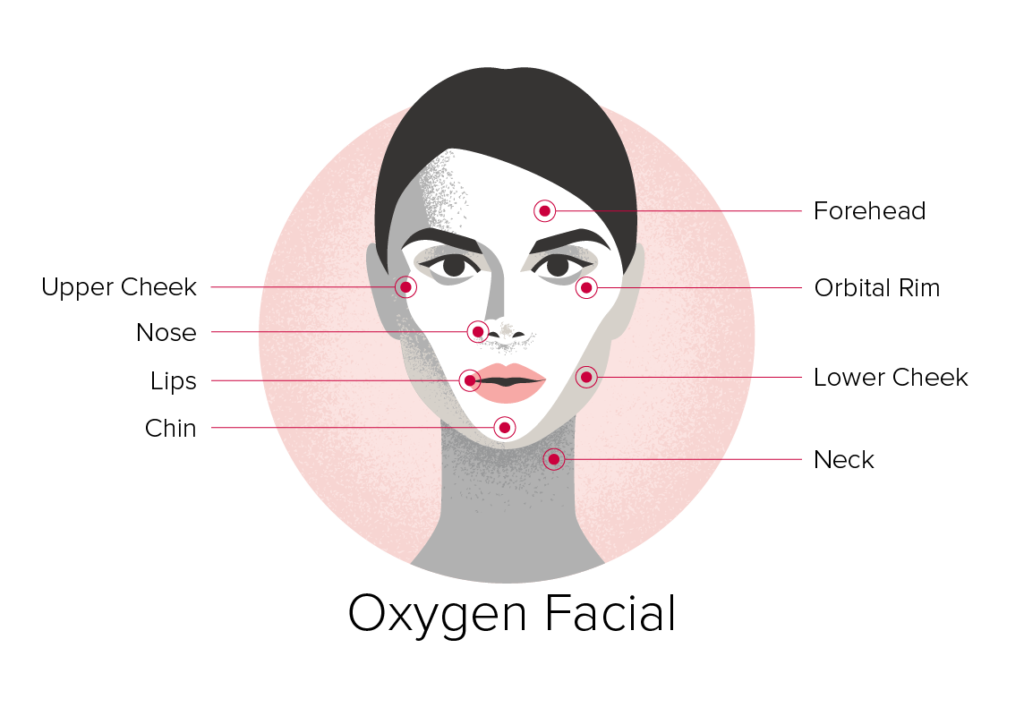
1. The Forehead
You use the muscles in your face to make expressions. Those expressions, over time, eventually cause your skin to lose elasticity and fold in on itself. The forehead is one of the largest areas of your face and, as a result, is one of the most prominent.
So when horizontal lines begin to develop along this area, they can have an immediate and dramatic impact on the face. During an oxygen procedure, an aesthetician makes small, upward strokes between the eyebrows, exposing the deeper layers of tissue to the serum and oxygen.
She then glides the infuser up toward the center of the forehead, each stroke working parallel to the previous and gradually moving towards the outer side of the face. Once she has reached the beginning of the eyebrow, the strokes become horizontal, working outward towards the hairline.
2. The Upper Cheek
Using the same technique, the aesthetician can apply the serum and oxygen to the upper cheek, which is notorious for losing elasticity and causing a drooping appearance. The trained professional who is conducting the procedure will start at the cheekbone and work toward the ear, making small downward strokes as she goes.
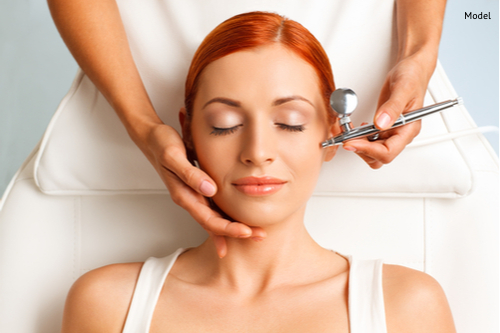
3. The Eye
The eyes are the focal point of your face. During conversation and even in photos, they are the feature that draws the most attention. Fine lines and wrinkles around this area are, unfortunately, also some of the most noticeable.
While most people may overlook wrinkles on the forehead or near the nose, they are almost certain to notice the lines near your eyes. An oxygen facial can combat this, but it is advisable to go slowly, covering a little of the eye area at a time.
The aesthetician begins at the corner of the eye, using upward strokes to infuse the serum. She will typically concentrate on the outer corner of the orbital bone, working the infuser in a forty-five degree upward motion. The area under the eye can be treated in the same manner. She sprays a very fine mist under the eye—but not too close—and starts from the inner corner and works outward. This is typically repeated four or five times.
4. The Nose
Even the nose can suffer the adverse effects of aging. When working on the nose, the aesthetician will again do a little at a time. She sprays a small amount of the serum onto the bridge of the nose, making sure to also cover the sides of the nose down to the tip and outer nostrils.
Working from the top of the nose, she works the tip of the infuser in a downward fashion, beginning from the bridge and then down the side of the nose.
5. The Lips
To treat the lips, the aesthetician sprays a small amount of the serum onto the edge of the upper lip. Working from the center, she uses half-centimeter upward strokes until she meets the corner of the mouth. She repeats the process for the lower lip, with downward motions instead of upward.
6. The Lower Cheek and Chin
These areas suffer harshly when collagen and elastin production slows down because they create a droopy jawline and undefined chin, greatly adding to the age of the overall appearance.
During this procedure, the aesthetician sprays the entire lower cheek area down to just beyond the jawline.
Beginning from the center of the chin, she works out towards the earlobe. Each stroke should finish approximately two centimeters below the jawline, and the area should be finished with long strokes starting directly under the chin following the jaw bone to the ear lobe.
The lower jaw and chin area can be prone to open pores and excessive dehydration. Therefore, additional serum saturation is recommended.
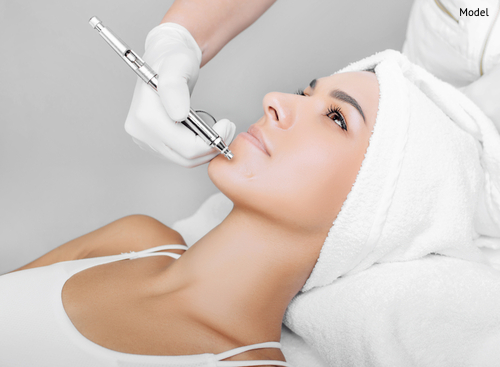
7. The Neck
Similar to the lower chin and cheek, lost tissue integrity in the neck can cause a condition many refer to as “turkey neck”, which is a collection of flabby skin under the jaw. Luckily, this, too, can be addressed during an oxygen facial.
During the procedure, the aesthetician will spray half of the neck from the middle of the chin down to the base of the neck. Using strokes from the center of the neck, she works outwards until she is in line with the earlobe.
If you would like more information about oxygen facials, give our office a call at (775) 828-7400 to schedule a consultation.

